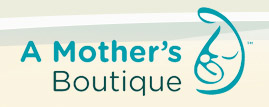Earlier, we read about Renee Prymus and her experience with dramatic oversupply. Many women reach out for support with their oversupply and aren’t able to find much information regarding engorgement past the newborn stage. In addition to causing painful discomfort for mothers, oversupply can cause babies to have colicky symptoms, as they gasp for air between gulps of milk spraying forcefully from the mother’s breast. We’d like to share some pointers for families struggling with this challenge.
Laid-Back Nursing
While this technique doesn’t affect the amount of milk being produced, it can help with the forceful letdown. Laid-back or reclined nursing means mama leans back in a chair or sofa with the baby on her stomach. The baby must work to tilt his/her chin up to the nipple (this can also help a sleepy baby stay awake during a feeding) and allows gravity to help control the force of the initial letdown. Kellymom suggests some other nursing positions that can use gravity to mom’s advantage in slowing down the force of the milk stream.
Express First, Then Nurse
Some mothers find it helpful to express a bit of milk before putting baby to breast, so the most forceful letdown occurs by hand expression or into the pump, leaving a more manageable stream for baby to nurse.
Reverse Pressure Softening
One technique to express a bit of milk, relieve pressure for mom, and not encourage further milk production is Reverse Pressure Softening. This can soften the breasts to increase comfort for the mother and for the infant trying to latch. Basically, mom (or a helper) curves her fingers around the areola, pulls inward toward the chest, and counts to 50. The International Breastfeeding Centre includes some diagrams and more information about this technique.
Block Feeding
Normally, mothers offer both breasts to the baby during a feeding session. For mothers with an abundance of milk and a forceful milk-ejection reflex (think: fire hose), their babies might be experiencing discomfort at the breast and offering both breasts each feeding keeps signaling for the body to make more milk. Block feeding involves offering only one breast per feeding, and possibly the same breast for 2 feedings in a row if the baby seems to be getting enough milk.
This signals the body to produce less milk per breast (since it’s only getting used every-other feeding or less) and can help to manage oversupply. La Leche League suggests this method might give the baby more fat content as well, since the baby is getting less foremilk.
Full Drainage Method
A local mom tipped me off to a study published in the International Breastfeeding Journal about the “full drainage and block feeding method” for managing oversupply. The method suggests first fully draining the breasts–a hospital grade pump can be the most effective at achieving this–and then offering the baby a full feeding session from each breast. For subsequent feedings, offer only one breast per feeding.
According to the author of the study, “Many infants will fall asleep fully satisfied with high fat hindmilk, many for the first time.” As the mother’s body adjusts, engorgement can be a problem in between feedings. The author notes that usually, mothers will only have to fully drain the breasts once, but sometimes engorgement may cause mothers to need to repeat the process.
Apply Compresses
Applying cool compresses to the breasts between feedings can restrict blood flow and discourage milk production. As strange as it sounds to those who haven’t tried it, applying green cabbage leaves to the breasts can also help with engorgement. There is little research behind the cabbage method, but many moms find the leaves more comfortable than ice packs. Cabbage can be left on the breasts until the engorgement subsides or until the leaves wilt, and can be applied chilled or at room temperature.
Herbs
Herbs like sage and peppermint can decrease milk production. Many women use these herbs during the weaning process, but they can be helpful in moderation for women experiencing oversupply. Kellymom has a great roundup of “weaning herbs” and some recipes/preparations for mothers to make tea or apply the herbs to the breasts directly.
Did you experience oversupply? Leave a comment to share management techniques that worked for you.











